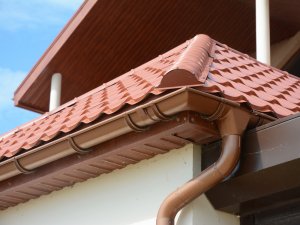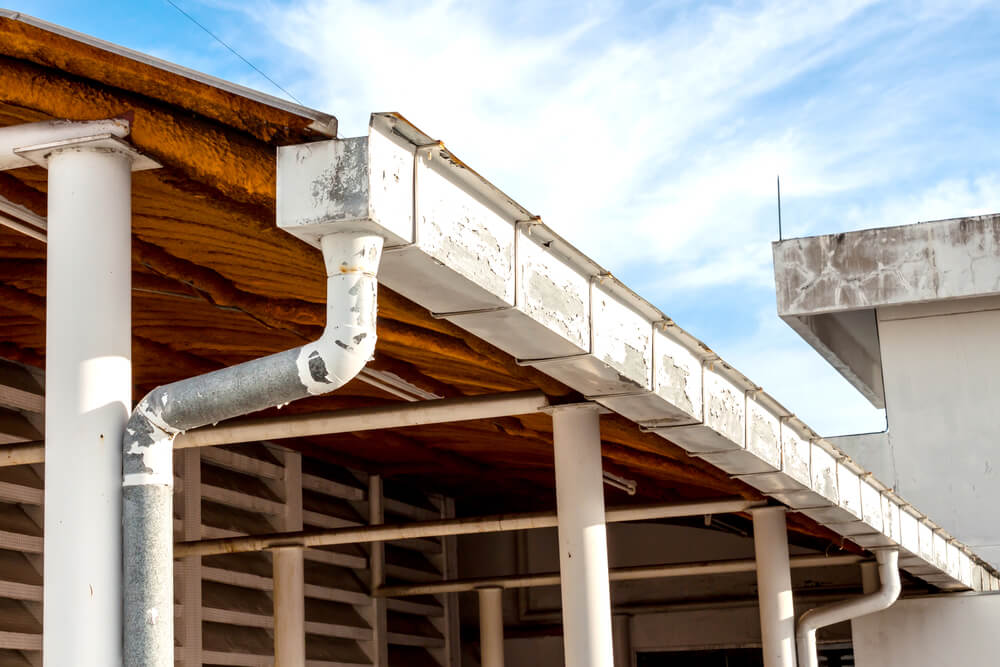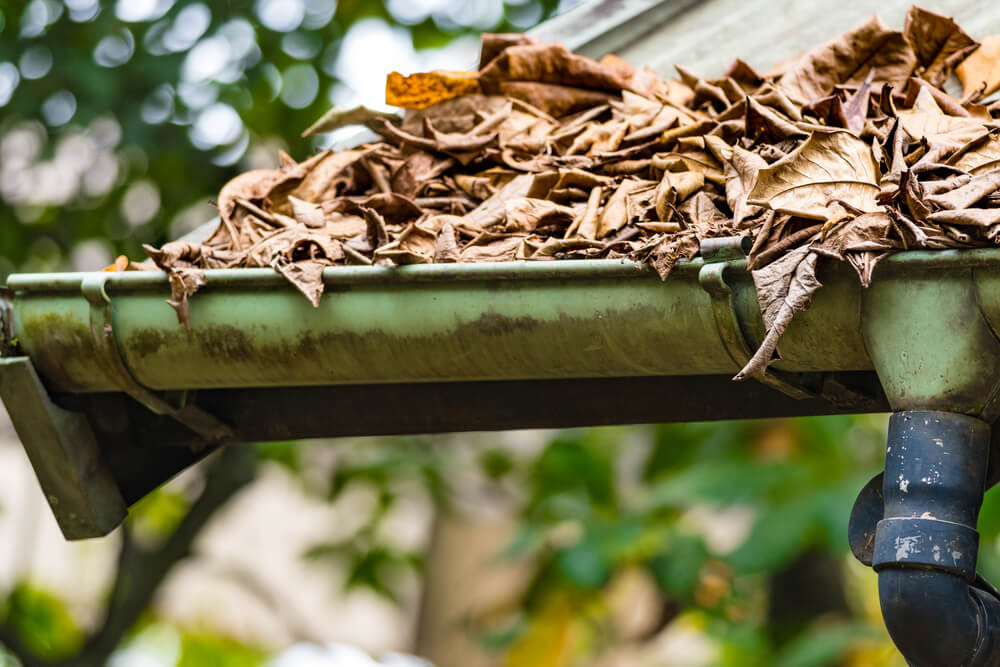Tips for Choosing the Right Gutters and Downspouts

Installing the right gutters and downspouts is key for preventing serious structural problems in your home. Though many people brush their importance aside, gutters and downspouts can prevent big moisture or leak issues.
They gather rainwater from the roof to keep it from accumulating on the surface. Thus, they ensure that the structure stays in good condition, especially during the winter months. But how can you choose the right ones? Here are some tips.
5 recommendations for choosing the right gutters and downspouts
You need to take your search for the right pieces seriously. If you want your gutter system to work in optimal conditions, make sure you take certain factors like width, the materials and design into consideration before making your choice.
These factors will keep your home’s needs covered, preventing rainwater from leaking through the roof or through the exterior walls. In our post today, we want to dig into the details of making the best choice for gutters and downspouts.

1. Choose sectional gutters
These days you have sectional gutter options at your fingertips and they offer great advantages. They’re a much better option than seamless models. Unlike seamless gutters, sectional gutters help prevent leaks or overflow during strong rain storms.
2. Consider the material carefully
Gutters and downspout options come in a variety of materials. The right material will vary with each home and its specific needs. The most popular materials are aluminum, copper, galvanized steel and vinyl.
- Aluminum is one of the most widely-used materials as it doesn’t rust and offers a wide variety of colors.
- Copper lasts a long time but it’s the most expensive material.
- Galvanized steel is also quite resilient but not as visually appealing.
- PVC is the most economical option of the group but not as durable.
3. Types of gutters
Aside from the material, you should also inform yourself about the different gutter designs available. K-style gutters are one of the most popular options. The name comes from its side profile, which resembles the letter K.
K-style gutters are durable and easy to install. In addition, they ensure fewer chances of leaks as they can hold more water in their rounded shape.
On the other hand, half-round gutters are another option that have a semi-circular tube-shape. You can normally see them on older homes. Compared to the K-style gutters, they are less likely to suffer blockages. And they generally withstand rust very well.

4. Choose the right width
Before you install your gutter system, make sure you know which width will best suit your house. To determine the appropriate width for your gutters, you need to think about certain aspects but especially how much precipitation the area you live in usually experiences.
On top of the amount of precipitation, you should also consider its intensity or lack thereof. This is a crucial factor if you live in an area where rain storms are common. Once you think over these factors, you can proceed to choose the best width for your gutters.
To give you an idea, if you live in an area that receives a considerable amount of precipitation, look for a larger diameter. The measurements should ensure full drainage without overflowing.
The best way to ensure the right size for your house is by consulting a specialist in the matter. If you make a rash, uninformed decision, you’ll risk installing a useless gutter system.
5. Use accessories

When you’re preparing to install gutters and downspouts, you should also consider adding accessories to optimize their efficiency. Many reduce the need for constant maintenance. Think about:
- Gutter guards and strainers: gutter guards fit on top of gutters to prevent leaves and other natural elements from falling in. They help optimize drainage and prevent blockage among other benefits.
- Downspout guards: you have to take good care of downspouts. The smallest blockage can wreak havoc. In light of that, we recommend using downspout guards that strain and prevent elements from entering.
- Rainwater-harvesting containers: these are great for people who strive to be eco-friendly. Rainwater-harvesting containers connect to the end of the downspouts to collect rainwater. You can use the water later for your garden or to clean your deck.
Have any lingering questions about choosing the best gutters or downspouts? Contact a professional today to get the job down right.
Installing the right gutters and downspouts is key for preventing serious structural problems in your home. Though many people brush their importance aside, gutters and downspouts can prevent big moisture or leak issues.
They gather rainwater from the roof to keep it from accumulating on the surface. Thus, they ensure that the structure stays in good condition, especially during the winter months. But how can you choose the right ones? Here are some tips.
5 recommendations for choosing the right gutters and downspouts
You need to take your search for the right pieces seriously. If you want your gutter system to work in optimal conditions, make sure you take certain factors like width, the materials and design into consideration before making your choice.
These factors will keep your home’s needs covered, preventing rainwater from leaking through the roof or through the exterior walls. In our post today, we want to dig into the details of making the best choice for gutters and downspouts.

1. Choose sectional gutters
These days you have sectional gutter options at your fingertips and they offer great advantages. They’re a much better option than seamless models. Unlike seamless gutters, sectional gutters help prevent leaks or overflow during strong rain storms.
2. Consider the material carefully
Gutters and downspout options come in a variety of materials. The right material will vary with each home and its specific needs. The most popular materials are aluminum, copper, galvanized steel and vinyl.
- Aluminum is one of the most widely-used materials as it doesn’t rust and offers a wide variety of colors.
- Copper lasts a long time but it’s the most expensive material.
- Galvanized steel is also quite resilient but not as visually appealing.
- PVC is the most economical option of the group but not as durable.
3. Types of gutters
Aside from the material, you should also inform yourself about the different gutter designs available. K-style gutters are one of the most popular options. The name comes from its side profile, which resembles the letter K.
K-style gutters are durable and easy to install. In addition, they ensure fewer chances of leaks as they can hold more water in their rounded shape.
On the other hand, half-round gutters are another option that have a semi-circular tube-shape. You can normally see them on older homes. Compared to the K-style gutters, they are less likely to suffer blockages. And they generally withstand rust very well.

4. Choose the right width
Before you install your gutter system, make sure you know which width will best suit your house. To determine the appropriate width for your gutters, you need to think about certain aspects but especially how much precipitation the area you live in usually experiences.
On top of the amount of precipitation, you should also consider its intensity or lack thereof. This is a crucial factor if you live in an area where rain storms are common. Once you think over these factors, you can proceed to choose the best width for your gutters.
To give you an idea, if you live in an area that receives a considerable amount of precipitation, look for a larger diameter. The measurements should ensure full drainage without overflowing.
The best way to ensure the right size for your house is by consulting a specialist in the matter. If you make a rash, uninformed decision, you’ll risk installing a useless gutter system.
5. Use accessories

When you’re preparing to install gutters and downspouts, you should also consider adding accessories to optimize their efficiency. Many reduce the need for constant maintenance. Think about:
- Gutter guards and strainers: gutter guards fit on top of gutters to prevent leaves and other natural elements from falling in. They help optimize drainage and prevent blockage among other benefits.
- Downspout guards: you have to take good care of downspouts. The smallest blockage can wreak havoc. In light of that, we recommend using downspout guards that strain and prevent elements from entering.
- Rainwater-harvesting containers: these are great for people who strive to be eco-friendly. Rainwater-harvesting containers connect to the end of the downspouts to collect rainwater. You can use the water later for your garden or to clean your deck.
Have any lingering questions about choosing the best gutters or downspouts? Contact a professional today to get the job down right.







